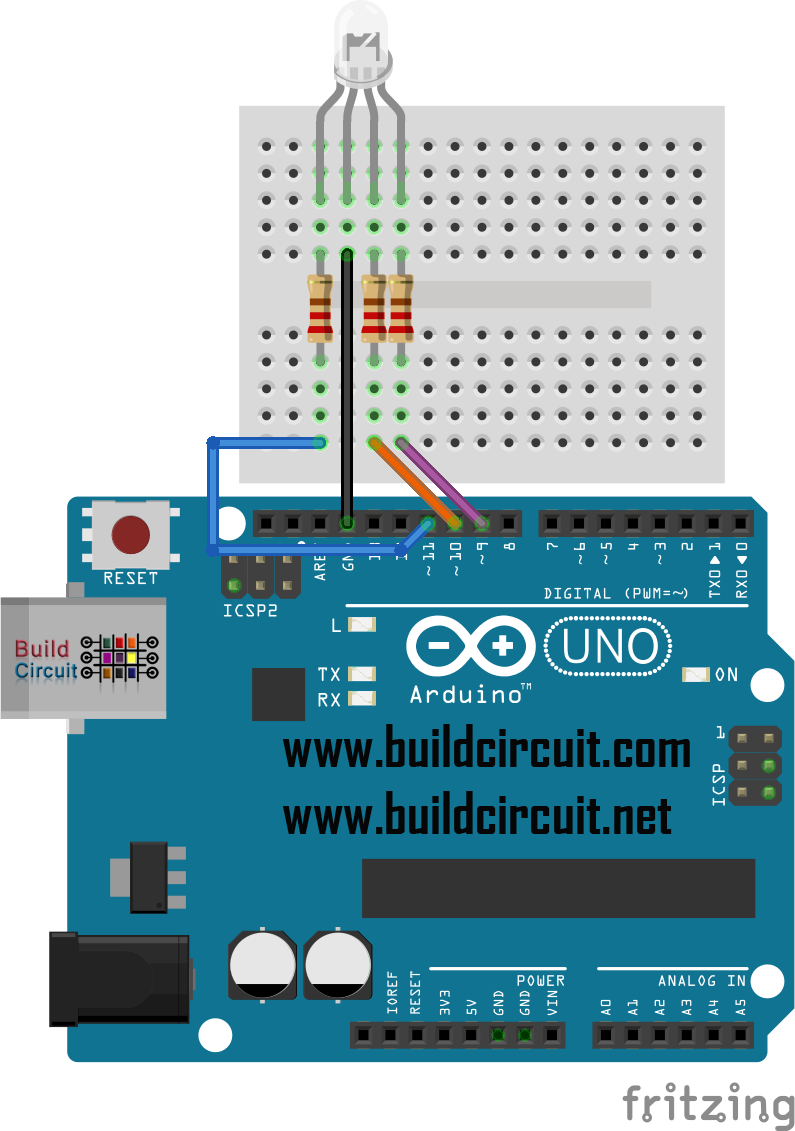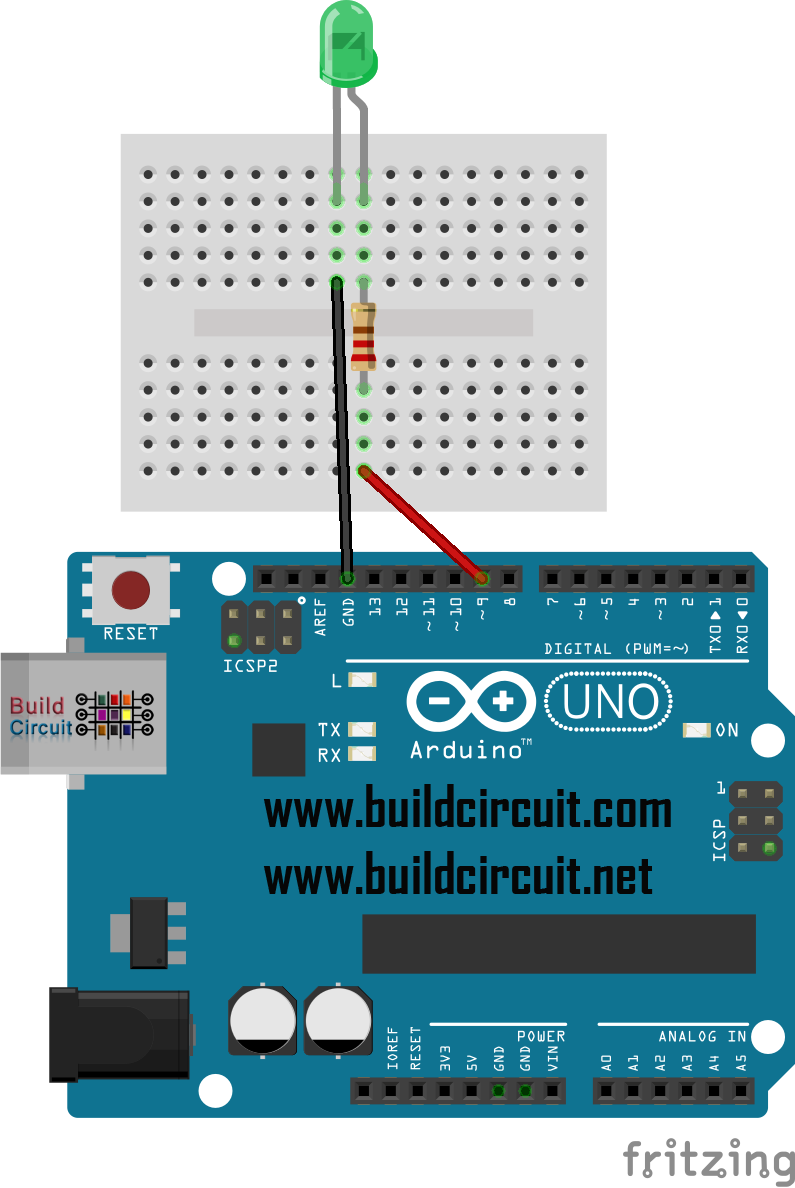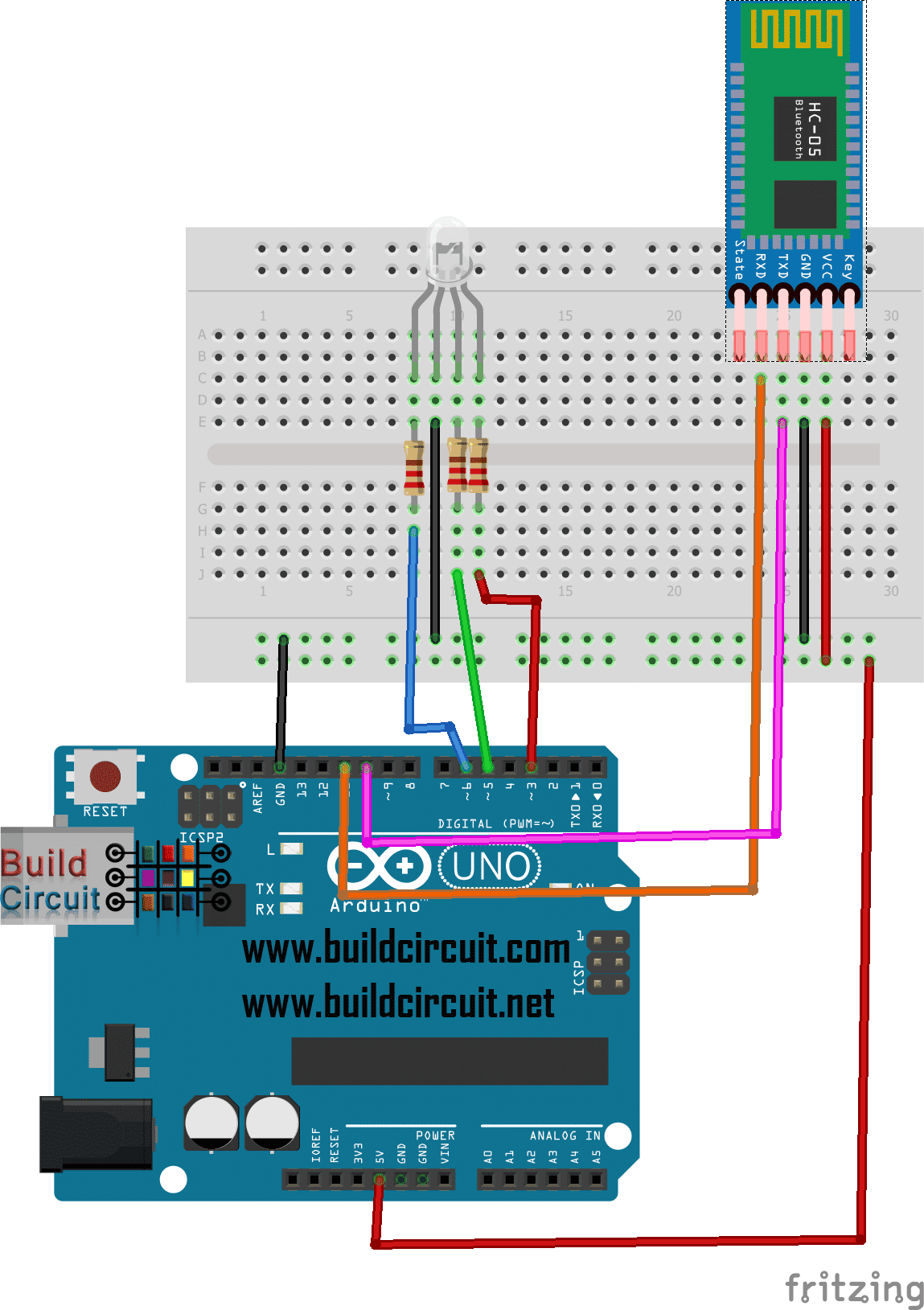Arduino Project 27-Arduino RGB LED experiment

In this tutorial we will learn how to change the color of an RGB LED connected to Arduino, alternating for two seconds the following colors: red, green, blue, and then orange, yellow, indigo and purple.
It is similar to the previous fade led effect experiment but it is not limited to only one LED but there are three LEDs integrated in a single diode.
A common cathode RGB LED is a type of light-emitting diode (LED) that is capable of emitting light in various colors by combining the illumination of three individual LEDs: red (R), green (G), and blue (B). In a common cathode RGB LED, the cathodes of the three internal LEDs are connected and share a common connection, while the anodes of each LED are separate.
Here are key characteristics and details about common cathode RGB LEDs:
- Color Mixing:
- The common cathode RGB LED allows for color mixing by independently controlling the intensity of the red, green, and blue LEDs. By varying the intensity of each color, a wide range of colors can be produced.
- Internal Structure:
- Inside the common cathode RGB LED, there are three separate LED elements for red, green, and blue light emission. These elements share a common cathode connection, usually represented by a longer leg or a flat side on the LED package.
- Circuit Connection:
- When interfacing with a microcontroller or other circuitry, the common cathode RGB LED is connected with the cathode pin tied to the ground (GND) or a common reference voltage. The anode pins are connected to individual digital output pins on the microcontroller.
- PWM Control:
- To achieve various colors, Pulse Width Modulation (PWM) is commonly used. By varying the duty cycle of the PWM signal for each color (R, G, B), the average current flowing through each LED can be adjusted, controlling its brightness.
- Color Representation:
- By mixing different intensities of red, green, and blue light, a common cathode RGB LED can produce a wide spectrum of colors, including white when all three LEDs are fully illuminated. The color representation is essential for applications such as mood lighting, displays, and decorative projects.
- Applications:
- Common cathode RGB LEDs find applications in various electronic projects and devices, including:
- Decorative lighting and displays
- Signage and advertising
- Stage lighting
- Consumer electronics (such as RGB LED strips)
- Educational projects for learning about color mixing and electronics
- Common cathode RGB LEDs find applications in various electronic projects and devices, including:
- Control Methods:
- Microcontrollers, like Arduino or Raspberry Pi, are commonly used to control common cathode RGB LEDs. Software can be programmed to adjust the intensity of each color component independently, enabling dynamic color changes and animations.
- Datasheet Information:
- Refer to the datasheet provided by the manufacturer for specific details on the forward voltage, current ratings, and other electrical characteristics of the common cathode RGB LED.
Understanding the characteristics and proper connection methods of common cathode RGB LEDs is crucial for creating visually appealing and dynamically controllable lighting effects in electronic projects.












